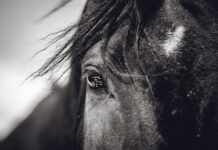
The mild winter of 2011-2012 was welcomed by most horse owners in North America, but warmer temperatures could mean higher mosquito activity in some areas. Besides the annoyance these pests cause, they can carry some deadly, but preventable equine diseases.
These diseases are found in bird populations and transmitted by mosquitoes to horses, humans, and sometimes dogs and cats. Although WNV and EEE can affect several different species, they can’t be transmitted directly from horse to human or vice versa; the mosquitoes are an essential vector.
In addition to vaccinating, taking steps to reduce the mosquito population at horse farms can slow the spread of the disease. Mosquitoes prefer standing water for breeding grounds, so providing proper drainage around barns and regularly emptying and scrubbing water troughs can discourage them from settling in. Using bug repellant for both horses and humans is also helpful during peak season. Mosquito activity is typically highest at dusk, so bringing horses into their stalls at that time can also help reduce the spread of mosquito-borne diseases.
Further Reading
Vaccinating for Mosquito-Borne Diseases
Plan ahead to Reduce the Risk of West Nile Virus
Equine Vaccination Strategies






Thanks for the reminder.
good info
It’s easy for me to remember annual shots because my horse gets them for his birthday! Poor boy!
Those pesty little bugs sure can cause alot of problems for our horses.